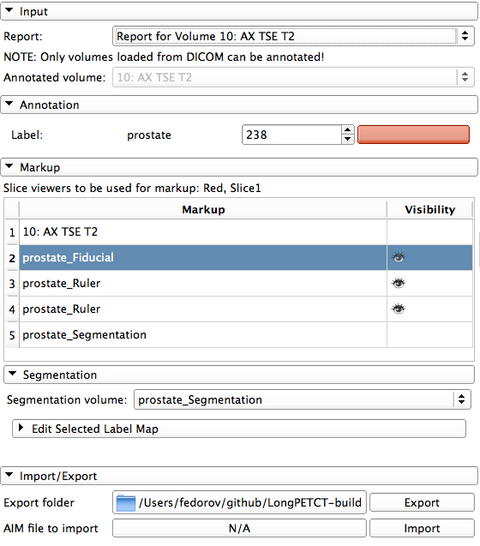Difference between revisions of "Documentation/Nightly/Extensions/VirtualFractureReconstruction"
From Slicer Wiki
Kfritscher76 (talk | contribs) (Created page with '<!-- ---------------------------- --> {{documentation/{{documentation/version}}/module-header}} <!-- ---------------------------- --> <!-- ---------------------------- --> {{doc…') |
Kfritscher76 (talk | contribs) |
||
| Line 3: | Line 3: | ||
<!-- ---------------------------- --> | <!-- ---------------------------- --> | ||
| − | |||
{{documentation/{{documentation/version}}/module-section|Introduction and Acknowledgements}} | {{documentation/{{documentation/version}}/module-section|Introduction and Acknowledgements}} | ||
{{documentation/{{documentation/version}}/module-introduction-start|{{documentation/modulename}}}} | {{documentation/{{documentation/version}}/module-introduction-start|{{documentation/modulename}}}} | ||
{{documentation/{{documentation/version}}/module-introduction-row}} | {{documentation/{{documentation/version}}/module-introduction-row}} | ||
| − | Extension: [[Documentation/{{documentation/version}}/Extensions/ | + | Extension: [[Documentation/{{documentation/version}}/Extensions/VirtualFractureReconstruction|Virtual Fracture Reconstruction]]<br> |
Acknowledgments: | Acknowledgments: | ||
| − | + | This work has been funded by the Austrian Science Fund.<br> | |
| + | Author: Karl Fritscher, UMIT, BWH, MGH | ||
| + | Contributors: Peter Karasev, STeve Pieper, Ron Kikinis | ||
| Line 16: | Line 17: | ||
{| | {| | ||
| − | + | The reposition of bone fragments after a fracture, a process also referred to as fracture reduction, is a crucial task during the operative treatment of complex bone fractures. The repositioning of fracture fragments often requires a trial and error approach, which leads to a significant prolongation of the surgery and causes additional trauma to the fragments and the surrounding soft tissue. Wound healing failure, infections, or joint stiffness can be the consequence. Therefore, there is a clear trend towards the development of less invasive techniques to reconstruct complex fractures. In order to support this trend, software tools for calculating and visualizing the optimal way of repositioning fracture fragments based on the usage of segmented CT images as input data have been developed. In several studies, they have successfully demonstrated their potential to decrease operation times and increase reduction accuracy. However, existing software tools are often restricted to particular types of fractures and require a large amount of user interaction.<br> | |
| + | Hence, the main objective of the proposed project is to overcome these limitations by developing an algorithmic pipeline that is calculating and visualizing the optimal way of repositioning fracture fragments with a minimal amount of user interaction and without restrictions to particular types of fractures. For this purpose, texture information coming from CT image, surface properties of the bone fragments as well as prior knowledge about the shape of the healthy (=non-fractured) bone are used for the reconstruction process.<br> | ||
| + | The module shall provide the possibility to perform a fully automated fracture reconstruction, but also to perform user guided reconstruction for very complex fractures with a large number of (small) bone fragments. | ||
| | | | ||
|} | |} | ||
| Line 22: | Line 25: | ||
{{documentation/{{documentation/version}}/module-section|Release Notes}} | {{documentation/{{documentation/version}}/module-section|Release Notes}} | ||
| − | + | The extension consists of two modules. One CLI Module and one loadable module. The CLI module is providing the algorithmic core functionality for the fragment alignment process, whereas the loadable module manages the automated reconstruction pipeline and integrates user interaction. | |
Please note that this module is under active development, and is being made available for the purposes of beta testing and feedback evaluation! The functionality, GUI and workflows may change in the subsequent releases of the module. | Please note that this module is under active development, and is being made available for the purposes of beta testing and feedback evaluation! The functionality, GUI and workflows may change in the subsequent releases of the module. | ||
Revision as of 12:26, 10 June 2013
Home < Documentation < Nightly < Extensions < VirtualFractureReconstructionIntroduction and Acknowledgements
|
Extension: Virtual Fracture Reconstruction
Module DescriptionThe reposition of bone fragments after a fracture, a process also referred to as fracture reduction, is a crucial task during the operative treatment of complex bone fractures. The repositioning of fracture fragments often requires a trial and error approach, which leads to a significant prolongation of the surgery and causes additional trauma to the fragments and the surrounding soft tissue. Wound healing failure, infections, or joint stiffness can be the consequence. Therefore, there is a clear trend towards the development of less invasive techniques to reconstruct complex fractures. In order to support this trend, software tools for calculating and visualizing the optimal way of repositioning fracture fragments based on the usage of segmented CT images as input data have been developed. In several studies, they have successfully demonstrated their potential to decrease operation times and increase reduction accuracy. However, existing software tools are often restricted to particular types of fractures and require a large amount of user interaction.Hence, the main objective of the proposed project is to overcome these limitations by developing an algorithmic pipeline that is calculating and visualizing the optimal way of repositioning fracture fragments with a minimal amount of user interaction and without restrictions to particular types of fractures. For this purpose, texture information coming from CT image, surface properties of the bone fragments as well as prior knowledge about the shape of the healthy (=non-fractured) bone are used for the reconstruction process. The module shall provide the possibility to perform a fully automated fracture reconstruction, but also to perform user guided reconstruction for very complex fractures with a large number of (small) bone fragments. Release NotesThe extension consists of two modules. One CLI Module and one loadable module. The CLI module is providing the algorithmic core functionality for the fragment alignment process, whereas the loadable module manages the automated reconstruction pipeline and integrates user interaction. Please note that this module is under active development, and is being made available for the purposes of beta testing and feedback evaluation! The functionality, GUI and workflows may change in the subsequent releases of the module. Use Cases??? Tutorials??? Panels and their use??? |
Similar Modules
References
- [http://???
Information for Developers
- Source code of the module: https://github.com/???
